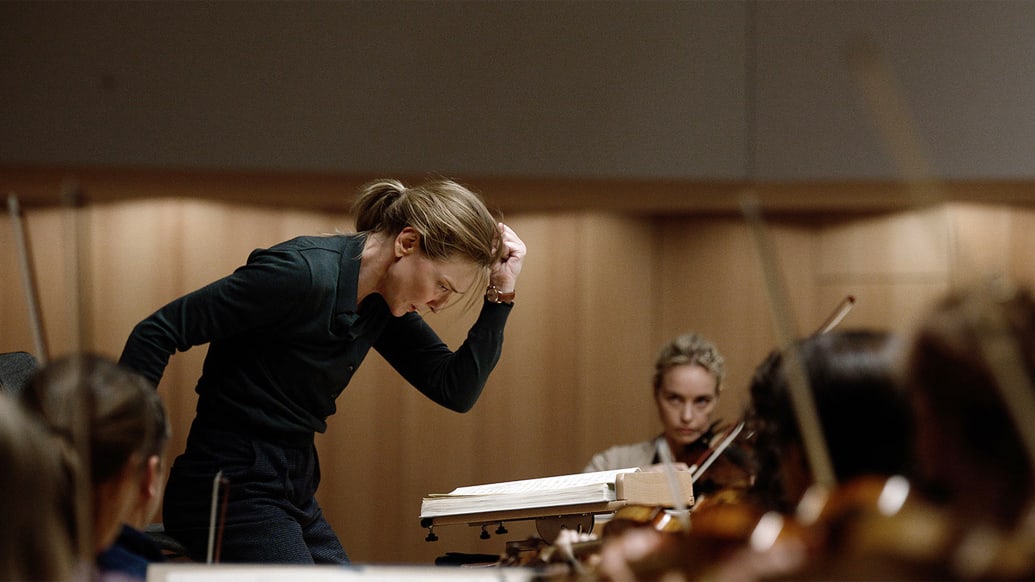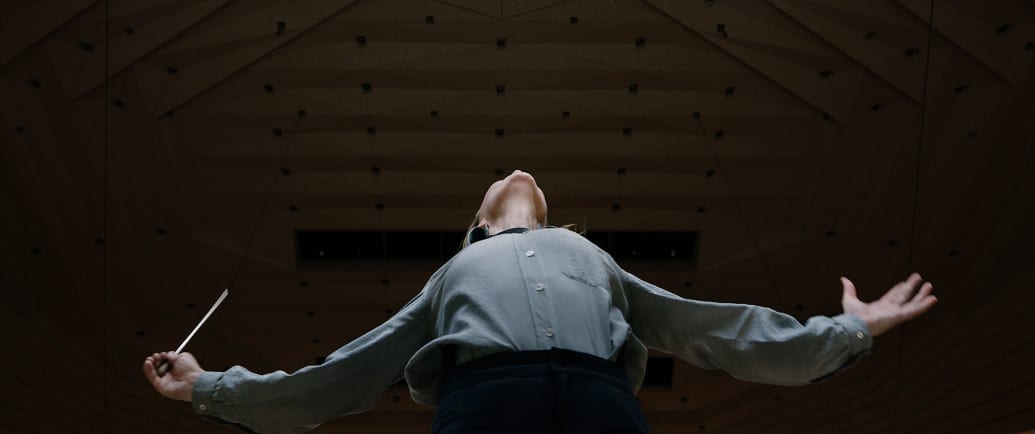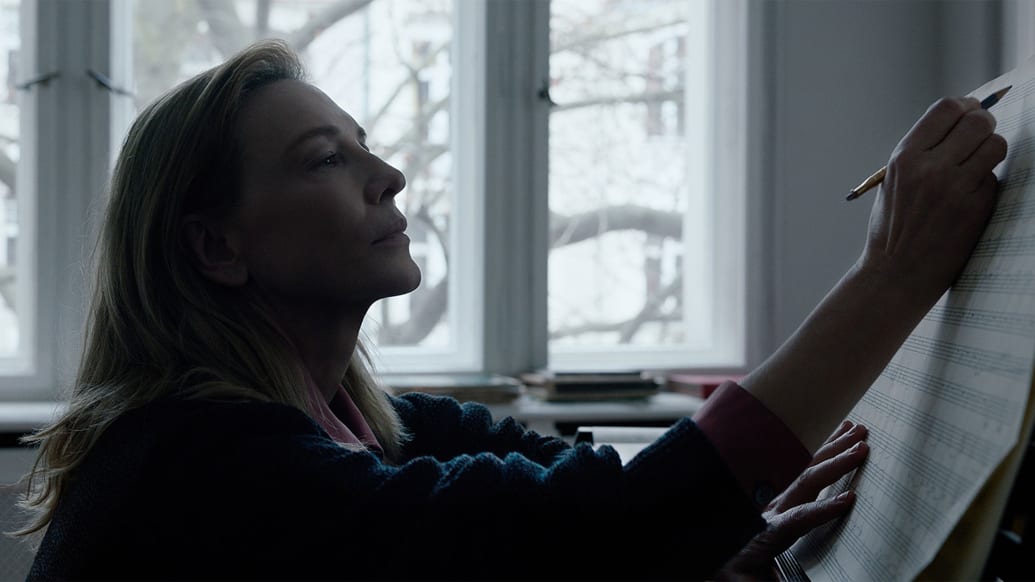As Nina Hoss sinks into a sumptuous hotel seat, a porcelain tea cup and a balancing saucer in her hands as she talks, it’s as if we’re in a scene tar together. Here it is: Sharon Judknow, concert director at the Berlin Symphony Orchestra, shares a press release to chat about his wife, celebrity conductor Lydia Tarr (Cate Blanchett). Even New York’s overcast skyline shares, spraying the city with rain once every hour.
“It reminds me of Berlin,” Peep Hoss.
somewhere in the city, New YorkerAdam Gopnik is likely to kick off some intellectual conversations as part of this year’s New Yorker Festival, which is currently underway. It’s like the opening scene of Todd Field tar—Gopnik, playing herself, interviews Lydia about her upcoming No.5 recording of Mahler. The scene looks so real to life, one might feel the need to google “Lydia Tarr’s true story?” After watching the movie.
That’s all it says: When? tar It is at its best (which one would argue, almost every minute), skipping the movie off the stage into the palm of our hands. Hoss feels it. She’s been feeling this way since she started working with Blanchett and Field. Now, the actress is finally buzzing about the intricacies of the movie with the rest of the world. Feeling like we’re in Berlin together makes the whole experience even more immersive. tar An inch away from being real.
“You can’t stop talking about it!” Hoss told me, unpacking several layers of Lydia’s personality in their first two minutes together. “I’m walking around, but that’s the great script that Todd actually wrote, and this amazing explanation from Kate and everyone else, really.”
there so far A little to talk about, when it comes tar. Blanchett stars as a power-hungry (fortunately, when we meet her, content with her immense control, holding the baton of one of the world’s best orchestras, bragging about EGOT, and about to drop a resume) conductor, with El Hoss as her devoted wife and first violinist. Its Sharon. However, Sharon is not an “innocent particle in the Lydia Tarr system,” says Hoss.

Nina El Hoss attends the red carpet for the movie tar During the 79th Venice International Film Festival at the Palazzo del Casino on the Lido in Venice, Italy, on September 1, 2022.
Karen de Paula / Anadolu Agency via Getty
“Who are we all about people who are genius or distinguished in a certain way?” She completes. “You lead an organization that has a system in itself, where people fall into that system and make their way, that’s what they know. They want you to be a certain way, otherwise they won’t respect you. Do you really have a chance to do things differently, even though others ask for it? From you? Sharon is part of that.”
Lydia and Sharon care about each other, but with their high ranks in the orchestra, their relationship hinges on being a bargain. As much as they communicate through conversations, by dancing to Count Basie and raising their sweet daughter Petra, they must communicate through the swing of a stick. Plus, we’re meeting the couple right after the pandemic. After being forced away from large groups of individuals making music and solitude with their daughter, this big return to the stage may be too much for them.
“Being able to go back and work on Mahler’s symphony is so overpowering,” says Hoss. “It’s probably too much for this relationship. Some small cracks appear because Lydia is in a place in her life where she doesn’t know what’s next. She’s working on her legacy, but is that stopping you from getting creative? The fifth Mahler is the last piece of this chest set. You have this out there, in the world, and then what? You’re on top of your career, on top of the industry—there’s nowhere else to go.”
But Lydia feels safe with Sharon. On top of the comforts of home life together, she seeks solace in the fact that her first violin is also her life partner, and hopefully will follow her to the ends of the earth. However: “It’s not exactly the case [Lydia] He needs it now,” says Hoss. “She doesn’t need safety and quiet.”

Cate Blanchett and Nina Hoss star in director Todd Fields tar.
Focus Features
The flaws start to show at the beginning of the movie, but the earthquake hits the middle: Lydia is accused of grooming her fellow students, particularly one of her, Krista Taylor, who recently committed suicide. Anti-Tar protesters around New York City claim that this may have been the result of Lydia’s behavior towards Krista. When their lives begin to fall apart, one might expect Sharon to say goodbye to his wife quickly. But it doesn’t. She stands by Lydia, asks for more information. Rather than extricate herself from Lydia’s life, Sharon begs to return to her.
Because, just maybe, Sharon could be the first violinist she was meant to be — someone who could make an entire orchestra believe in one voice, one conductor. You will be the perfect counterpart. If she can foresee a storm on its way, she can contribute enough umbrellas to the orchestra, and save the work she and Lydia put into music together. However, Lydia pushes Sharon further away, losing her orchestra in the process.
““The strength with which you work, the relentless search for every little detail in the character you portray, truly until the moment of complete exhaustion. [was the same]. ““
“[Cate and I] You have a similar – without wearing me [her] Level – the way this job is handled, says Hoss. “The strength with which she works, and the diligent search for every little detail in the character she portrays, really right up to the moment of complete exhaustion. Moreover, she is the most beautiful person. She made it so easy to dance together.”
In fact, Hoss played the violin tar, taking lessons from the first true violinist of the Dresden Philharmonic Orchestra – not only on how to play, but also on how to act around the orchestra. The first violinist acts almost as an assistant to the conductor, giving team members permission to leave early or get some water, and navigate their needs in a gentle and friendly way so the violin conductor doesn’t have to.
“Sharon knew that a lot,” Hoss explains. I thought, ‘That’s exactly what Sharon needs to be in Lydia’s position. “This genius might be a little cruel to these musicians – it’s a slap in the face. Sharon’s job is to calm them down.”
In real life, one might never see an orchestra led by a first female violinist and conductor, but that’s part of the allure of tar. They are just there. There are no questions. It’s not a major feminist statement, however, and the fact that it’s not a major feminist statement is a statement in itself: “This movie presents it as a natural thing,” she says. “That’s how it is. Two women have the two strongest positions in the orchestra.”

Cate Blanchett as Lydia Tarr.
Focus Features
The tar The team trained and shot with the Dresden Philharmonic Orchestra, playing alongside real musicians and real musicians, which only heightened Mania’s ability to gain character.
“What you can experience in this orchestral form is that all these individuals, coming together, take their instruments out of their cases, put them on their chair, and then all of a sudden, ConcentrationShe says Event? “It’s like the sky is opening up. That’s what you have to do every day? That’s so beautiful. I knew that was what Sharon was, and that’s what Lydia works for.”
Adding to this brilliance, Hoss says, is the fact that Blanchett is almost ready to lead an orchestra in the real world: “Oh,” she panted, eyes wide, after I asked her if Blanchett would possibly be able to embrace her off-screen Lydia inner heart. “If you put the time and effort behind it, I think so.”
in tarBlanchett does all her stunts, too. kind of. She learned to play the piano and speak German in the film, all in order to fully embody Lydia. In one scene, Lydia and Sharon argue in the car about the resignation of an assistant, and Lydia swerves everywhere in a roundabout until another driver nearly hits them. Sharon tells Lydia to slow down or let her get out of the car. Lydia complies – she stops the car and opens the door for her wife to go home.
Usually, exciting actors or VFX teams would have dealt with this scene. But Blanchett worked with other stunt drivers, choreographing and practicing getting out of it so she could be herself at the wheel, Mission: Impossible pattern.
“She’s a hell of a driver, on top of all the talent she has, so I felt very safe,” Hoss says. “It was built up until the moment I saw the car right in front of Sharon—she wasn’t driving around like a crazy woman. But she went for it, so I didn’t have to act much!”
However, there is a more violent scene at the end, which will likely require some interesting action. (In the credits, only two actors have stunt doubles: Blanchett and Mark Strong, who plays Elliot.) After Lydia is kicked off the podium in Berlin, her starving investor Elliott takes over, preparing for her Mahler scenario to work on his own terms. An angry Lydia rushes onto the stage and pushes Elliot off the podium in front of a live audience.

Cate Blanchett as Lydia Tarr.
Focus Features
Sharon can gasp for her wife. She could look at her disapprovingly. But this will be very clear. Instead, she appears unharmed, and is more interested in Lydia’s actions than shocked.
“I hope you can see that I find her so adorable,” says Hoss, of her final look on dashing Lydia. “That’s the allure of being around people who are so passionate and so talented that they go further than you, yourself, or Sharon would allow herself to go.”
Reviews for tar It has been overwhelmingly positive– This post is included – with early prize predictions for both Blanchett And the Hoss. While Hoss allowed herself to party a bit (especially with Cate, like the two Matching sportswear And the Roll the red carpet Together), she’s still hesitant to call the blockbuster a triumph yet. tar It opened in New York and Los Angeles on October 7 and is expanding to a wider audience this coming weekend. Hoss hopes the joy won’t fade as the rest of the country indulges.
““There is no conspiracy [to Tár], or the pivotal moment where it all happens. It’s a Zen thing, the way, the goal.”“
“It happened with Bedouin. She had such a commotion. People were disappointed. You wonder what it is, but it’s not what you expect,” says Hoss – though Bedouin It went on to win Best Picture at the Academy Awards. “Also, there is no plot [to Tár], or the pivotal moment where it all happens. It’s a Zen thing, the way, the goal.”
Coming in about three hours. tar Definitely not a short movie. But similar to finishing a long book, watching a Feld movie all the way feels like completing a journey, or participating in an experience. tar It is an event to be discussed with friends, to argue about, to gossip, quote lines, to root for award season, to choose like a science experiment.
“I also hope they go to the movies,” Hoss says of the perfect way to see the movie. “You just dive into her life for two and a half hours, thinking about all these raised questions that surround us so much. It’s thought-provoking.”
When I walked out of the hotel, I half-expected Lydia Tarr herself on the streets of New York, hiding under a giant canopy with a Mahler degree in hand. Me, no. But after a few days, I found myself seeing tar For the second time, he dives into Lydia’s life through Sharon’s eyes, delving into the intricacies of the film from a new perspective. It’s something you can – and should – do over and over again: find a new lens through which to view it tarand unravel the splendor of its brilliance on repetition so that you yourself can play Mahler’s Fifth Symphony.
[ad_2]




